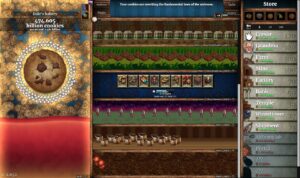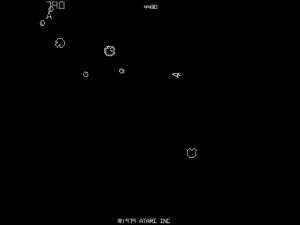Probably inspired by the great success of Kerbal Space Program (KSP), Stefo Mai Morojna came up with an idea to bring the fun of space travel into the palm of your hands.
Spaceflight simulator is an app for android and IOS (now available for PC too) that accomplishes exactly that. Let’s take a closer look at the praised game.
Gameplay – more than a sandbox
Rocket editor
Spaceflight Simulator gives you the freedom to build whatever rocket you want and fly it to the different planets in the solar system. Of course similar to KSP before you can fly a rocket you need to build it. The editor offers an intuitive interface where you can drag an drop the parts out of the menu. While building you rocket you don’t need to worry about any financial limitations as the game is currently a full sandbox game without any implemented money system. Regarding the parts you are given a basic arrangement of rocket parts concisting of Fuel tanks in different sizes, an astronaut capsule, 3 different types of engines, stage seperators and a lot more parts like docking ports, landing legs and RCS thrusters for control. When building you first rocket dont forget to equip a capsule or a probe as you will not be able to control you rocket otherwise.
Simulation physics
Although the game makes some technical and physical simplifications to improve the ease of use, the actual function of the parts in SFS is also refreshingly realistic done. The amount of parts is a little bit scarse when comparing SFS to its big cousin KSP but as the whole thing runs on your phone this is absolutely expected and gives you more than enough to play with. Should you get bored of the basic parts you also have the option to get an expansion via an in app purchase that unlocks more parts like more engines, skins and planets. Talking about planets, you are able to occupy mars, its two moons phobos and deimos, the earth moon, venus and mercury. All orbit the sun in the place they would in the real world, allowing for great simulations of real world space mission like landing a rover on mars.
Challenges
In the new update you are now also able to complete challenges like achieving a certain height with your rocket, or reaching a given orbit around a planet/moon. Some of them are also a bit more challenging like taking a tour around the moon by landing on three landmarks on its surface. To get the achievment of the challenge you will need to design and fly a rocket capable of the needed requirements. We will cover the challenges on here seperatly in a tutorial for the moon tour but in general they add a nice change to the otherwise pure sandbox game and keep the fun upright even after many play hours.
Graphics and sound – Basic and functional


The game goes for a minimalistic 2D view onto everything with a good spacing between the elements making it declutterd and easy to overview even on small phone screens. The rocket parts themself have a very functional design with a simple cartoonish look without much texture to them. The different planets follow this idea and have very simple terrain. Earth for example has no mountains, sea or tress and consist simply out of a green areal. This gets a little boring after a while but is not too much of a problem as you are spending most of your time in space anyway.
In recent years the game also got a great aerodynamic physics update making it a challenge to survive reentry into the atmosphere with the help of a headshield part. The plasma and fire animations on reentry are very well done and look absolutely great. When reentering make sure to enter earths atmosphere straight in the flight direction as your spacecraft will otherwise tumble out of control and will burn up.
Sound design
The sounds of the game are kept similar to the graphics very functional and simple. For a smartphone game that is played without sound most of the time anyway, they are perfectly fine and above average for a non competitive shooter mobile game.
Ease of use – not as hard as you might think
The simple two dimensional perspective is not only easy on the graphics but also great for controls because as you can imagine it would be quite difficult to implement the complex control mechanism of KSP into a touchscreen app. In general the controls are very intuitive and easy to learn as they mostly consist out of two buttons to steer your rocket in flight left to right. Should you equip the RCS part (reaction control system) and activate it by tapping on it you will also be able to rotate your spacecraft around its center of mass. All the buttons are also well enough separated from each other, big enough and are therefore great to use and navigate with.
Steering you rocket to orbit is quite easy thanks to a display in the top left showing you how far you have to tilt you rocket. Docking in orbit on the other hand is a bit more tricky and offers quite a challenge. To make this easier by selecting and focusing the spacecraft you want to dock with there will appear the relative speed of your spacecraft to the other so that you can approach it more easily.
Conclusion
Spaceflight Simulator: Spaceflight Simulator is a video game worthy of its name. Even in its free version it offers many entertaining hours of spaceflight fun similar to Kerbal Space Program in a sandbox format. Best of all it runs on your smartphone as well as on PC. – GLPC: phantom











Pingback: How to easily accomplish all moon missions in Spaceflight Simulator! - games.lars-projects.com
Pingback: Raft-like space adventure – First Look at Life Not Supported
Thanks for sharing. I read many of your blog posts, cool, your blog is very good.
I don’t think the title of your article matches the content lol. Just kidding, mainly because I had some doubts after reading the article.
Your article helped me a lot, is there any more related content? Thanks!
Can you be more specific about the content of your article? After reading it, I still have some doubts. Hope you can help me.
Your article helped me a lot, is there any more related content? Thanks!
I don’t think the title of your article matches the content lol. Just kidding, mainly because I had some doubts after reading the article.
Your point of view caught my eye and was very interesting. Thanks. I have a question for you.
Your article helped me a lot, is there any more related content? Thanks!
I don’t think the title of your article matches the content lol. Just kidding, mainly because I had some doubts after reading the article.
I don’t think the title of your article matches the content lol. Just kidding, mainly because I had some doubts after reading the article.
Can you be more specific about the content of your article? After reading it, I still have some doubts. Hope you can help me.
I don’t think the title of your article matches the content lol. Just kidding, mainly because I had some doubts after reading the article.
Can you be more specific about the content of your article? After reading it, I still have some doubts. Hope you can help me.